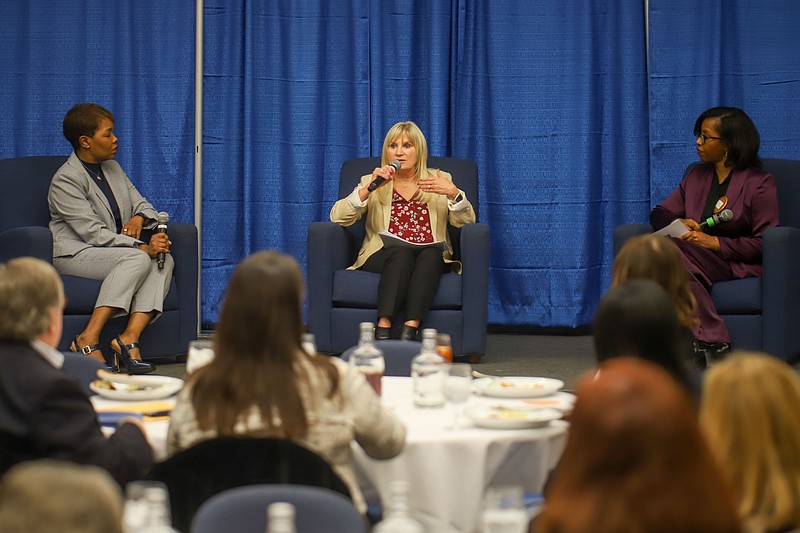An updated health equity report from BlueCross BlueShield of Tennessee reveals that race and social factors continue to influence health outcomes for many Tennesseans, particularly in areas such as childhood immunizations and maternal care.
"So much of health care actually happens outside of the clinic walls," Dr. Andrea Willis, chief medical officer for BlueCross, said during a Chattanooga Rotary Club meeting Thursday. "Where you go home, who you live with, where you work, the community you're in — all of that makes a difference."
During Thursday's meeting, Willis and other BlueCross officials presented the findings of the insurer's second annual health equity report. The report is an effort to use BlueCross's plethora of member data to spot disparities in care, identify barriers to that care and focus intervention through providers or other stakeholders, said Sherri Zink, chief data and engagement officer for BlueCross.
"From a data perspective, when we're addressing a person's health care needs, we're looking at them from a whole person perspective," she said. "In order for us to really understand where we can jump in and help an individual, we have to know this information and provide it to the right parties."
(READ MORE: Action needed as Tennessee kindergarten vaccination rates hit new low, report says)
Photo Gallery
New BlueCross Tennessee health equity report highlights disparities in maternal care, child vaccines
Last year's report revealed a declining uptake in childhood immunizations, which Zink said continued in this year's report despite an increased focus on reversing that trend.
For commercial members, the likelihood of receiving childhood vaccinations for Asian children is 59.3%, followed by white children at 54%, Hispanics at 48.7% and Black children at 44.6%, according to the report.
Those figures are lower for BlueCare plan members, which is BlueCross's Medicaid plan. For those members, the likelihood of receiving routine vaccines for Hispanic children was 41.3%, followed by Asian children at 40.5%, white children at 27.5% and Black children at 18.7%.
(READ MORE: COVID-19 makes racial health disparities more pronounced in Chattanooga, U.S.)
Willis noted BlueCross's data is based on the number of claims the insurer receives for health care services and that there are other ways for children to get vaccinated, such as through local health departments.
"But based on our claims, it leads us to believe that kids are not getting their routine immunizations — not like they were in the past," she said, adding that the drop in vaccination claims begs the question, "What is going on?"
For example, perhaps providers are not promoting vaccines in the same way or practicing "culturally competent care" — a term used to describe culturally sensitive and unbiased health care — she said.
"Because, a lot of times, if people don't feel respected in the health care system, in the provider's office, then they're not going to keep showing up," Willis said. "When we don't see claims, there's questions to be asked. We can't assume it's just the patients aren't seeking it. What is the provider community doing, as well?"
Maternal health is another area of heavy focus in terms of improving disparities, especially in the Medicaid population, Zink said.
For BlueCross's Medicaid members, Black, Asian and Hispanic women were all less likely than white women to receive prenatal care in the first trimester, according to the report. In terms of postpartum care, 78% of Asian members, 74.3% of Hispanic members, 68.1% of Black members and 68.1% of white members received care within 90 days of delivery.
Other findings from BlueCross:
— Pregnant Black patients were 2.3 times more likely to die than white patients.
— Mental health contributed to 27% of all pregnancy-related deaths.
— Substance use contributed to 39% of all pregnancy-related deaths.
— In Tennessee, Hispanic members are the least likely of all racial groups to be screened for colorectal cancer at the recommended age.
— Members with disabilities are 60% more likely to have issues related to transportation.
— Black members are 4 times as likely to be at risk for debt burden than white members.
— Black members are 2.5 times more likely to experience risk related to unreliable transportation.
Contact Elizabeth Fite at efite@timesfreepress.com or 423-757-6673.

